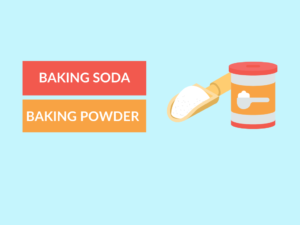Difference Between Broil and Bake
Are you confused about the terms “broil” and “bake” when it comes to cooking methods? In this article, we will explore the differences between broiling and baking, including their definitions, examples, uses, and a comprehensive table of differences. By the end, you’ll have a clear understanding of how these cooking techniques differ.
What is Broil?
Broiling is a cooking technique that uses direct, high heat from above to cook food quickly. It is commonly used for dishes that require browning or caramelization on the top surface. Examples of broiling include cooking steaks, fish fillets, and vegetables until they have a crispy, golden crust.
Uses of Broil:
- Quickly sear meats for a crusty exterior while keeping the inside juicy.
- Melting cheese on top of dishes.
- Crisping the top layer of casseroles, gratins, or desserts.
What is Bake?
Baking is a cooking method that uses indirect heat to cook food slowly and evenly. It involves surrounding the food with hot air in an enclosed space, such as an oven. Examples of baking include making cookies, cakes, bread, or roasting poultry until it’s fully cooked.
Uses of Bake:
- Cooking pastries, bread, cakes, and cookies.
- Roasting vegetables or meat in the oven.
- Preparing casseroles or baked pasta dishes.
Differences Between Broil and Bake
| Difference Area | Broil | Bake |
|---|---|---|
| Heat Source | Direct heat from above. | Indirect heat from all sides. |
| Cooking Time | Cooked quickly, usually within a few minutes. | Cooked slowly, often for an extended period of time. |
| Temperature Range | Generally a high temperature setting, around 450-550°F (230-290°C). | Varies depending on the recipe, typically between 300-425°F (150-220°C). |
| Food Placement | Food is placed close to the broiler element. | Food is placed in the middle or lower rack of the oven. |
| Browning | Broiling creates a crispy, browned top layer on the food. | Baking results in a golden or light brown color on the surface. |
| Cooking Vessel | Broiling is often done directly on a baking sheet or broiler pan. | Food is placed in a baking dish, pan, or on a baking sheet. |
| Food Types | Generally used for foods that require a crusty or crispy top. | Used for a wide variety of foods, including pastries, casseroles, and meats. |
| Cooking Effects | Broiling can quickly sear the surface of the food while keeping the interior moist. | Baking allows the food to cook slowly and evenly, resulting in tender textures. |
| Preheating | It is not usually necessary to preheat the broiler. | Baking often requires preheating to ensure even cooking. |
| Rack Position | Food is placed in the top rack position closest to the broiler element. | Food can be placed in various rack positions depending on the recipe. |
Conclusion:
In summary, broiling and baking are two distinct cooking methods with their own characteristics and uses. Broiling uses direct, high heat from above to quickly cook and brown foods, while baking involves indirect heat from all sides to cook food slowly and evenly. They differ in terms of heat source, cooking time, temperature range, food placement, browning effect, cooking vessel, food types, cooking effects, preheating, and rack position.
People Also Ask:
1. Is broiling healthier than baking?
Both broiling and baking can be healthy cooking methods, as they don’t require much added fat. However, broiling tends to cook food faster and may result in a slightly drier texture compared to baking.
2. Can you bake instead of broil?
While broiling and baking have different effects on food, you can use baking as an alternative to broiling. Simply adjust the cooking time and temperature to achieve similar results.
3. Can you broil in a baking dish?
It is not recommended to broil in a baking dish, as the high heat from the broiler element can cause the dish to crack or shatter. Instead, use a broiler pan or a baking sheet with a wire rack.
4. Can broiling replace grilling?
While broiling can mimic the effects of grilling to some extent, it is not a perfect replacement. Grilling involves cooking food directly over an open flame or hot coals, resulting in a distinct smoky flavor that broiling cannot replicate.
5. Can you broil frozen food?
It is not recommended to broil frozen food, as the high heat can burn the surface before the interior is thoroughly cooked. For best results, thaw the food before broiling or use other cooking methods such as baking or grilling.


